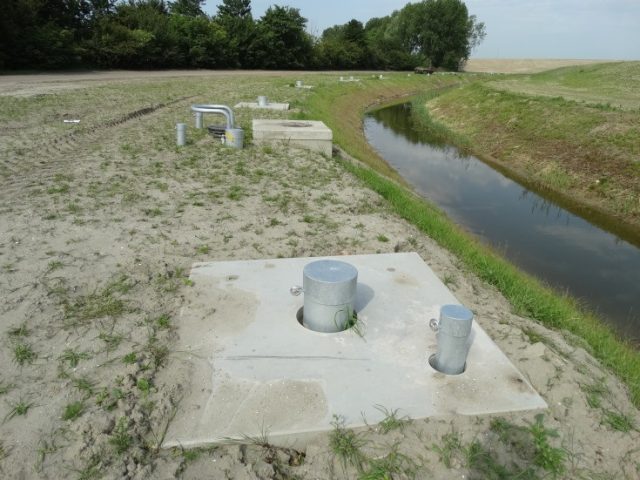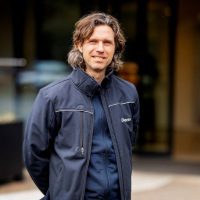Seepage system protects freshwater lens in Perk Polder
In the Perk Polder in the Dutch province of Zeeland, a new tidal and nature area is being built outside the dike on behalf of Rijkswaterstaat: 75 hectares of salt marshes and mud flats are being added to the Western Scheldt. This could affect the groundwater in the adjoining agricultural land. As a result, Deltares has been studying the effect on the local groundwater since 2010. The study included an extensive baseline measurement of the hydraulic head, the water table and the transition zone between the fresh and salt groundwater. The initial results showed that the tidal area will only have a limited negative impact.
Nevertheless, it is possible that the size of the existing freshwater lens in Kloosterzande could be reduced. Farmers take groundwater from this freshwater lens to irrigate their fields. A unique seepage system designed to protect the freshwater lens has been installed on the boundary between the polder and the new tidal area.
Opening in sea dike
On Thursday, 25 June, an opening was made in the sea dike adjoining the Perk Polder. As a result, the water from the Western Scheldt now flows in and out of the polder twice a day at high and low tide. Perry de Louw, a researcher with Deltares, is keeping a close eye on the impact of the new tidal area on groundwater in the adjoining land using an advanced monitoring system. ‘We will be using the monitoring data in time to fine-tune the seepage system as well as possible. We even think that it is possible to make the freshwater lens larger by making smart adjustments to the seepage system.’
Tailor-made solution for seepage system
The system consists of 61 vertical seepage tubes that have been drilled down to a depth of 17 metres in the subsoil. The tubes discharge the extra groundwater flow below the dike caused by the new tidal area. The overpressure in the groundwater at that depth pushes the groundwater up through the vertical pipes without pumps having to be used. There are horizontal pipes linked to the seepage tubes, which in turn end in 'regulating wells'. The levels in these wells can be raised or lowered; in that way, Deltares can control the seepage system.
This is a tailor-made system: a very extensive monitoring network provides telemetric measurements of hydraulic heads and salt levels. The outcomes of the measurements determine the regulation of the seepage system.

Follow-up / monitoring
The next six months until the end of 2015 will be used to optimise the settings of the system. Monitoring of the groundwater will continue in subsequent years. This will be done both to continue monitoring how the system works and to identify any changes in the groundwater system in good time. It should be pointed out that changes are very unlikely, precisely because of this unique seepage system.
About the Perk Polder project
The new nature area will be part of the Perk Polder area development. The aim of that development project is to breathe new social and economic life into the municipality of Hulst after the closure of the ferry service linking Kruiningen and the Perk Polder. It includes the construction of 250 permanent homes, 200 second homes, an exceptional 18-hole golf course, a marina and a hotel. The new nature area outside the dikes will enhance the natural appeal for residential and leisure purposes but it is primarily driven by the nature-restoration obligations relating to the Western Scheldt and the Scheldt estuary.
Forty hectares of the new nature area will compensate for the second river-deepening operation; the other 35 hectares are part of the Western Scheldt Nature Package in line with the 2010 Scheldt Estuary Development Sketch.




